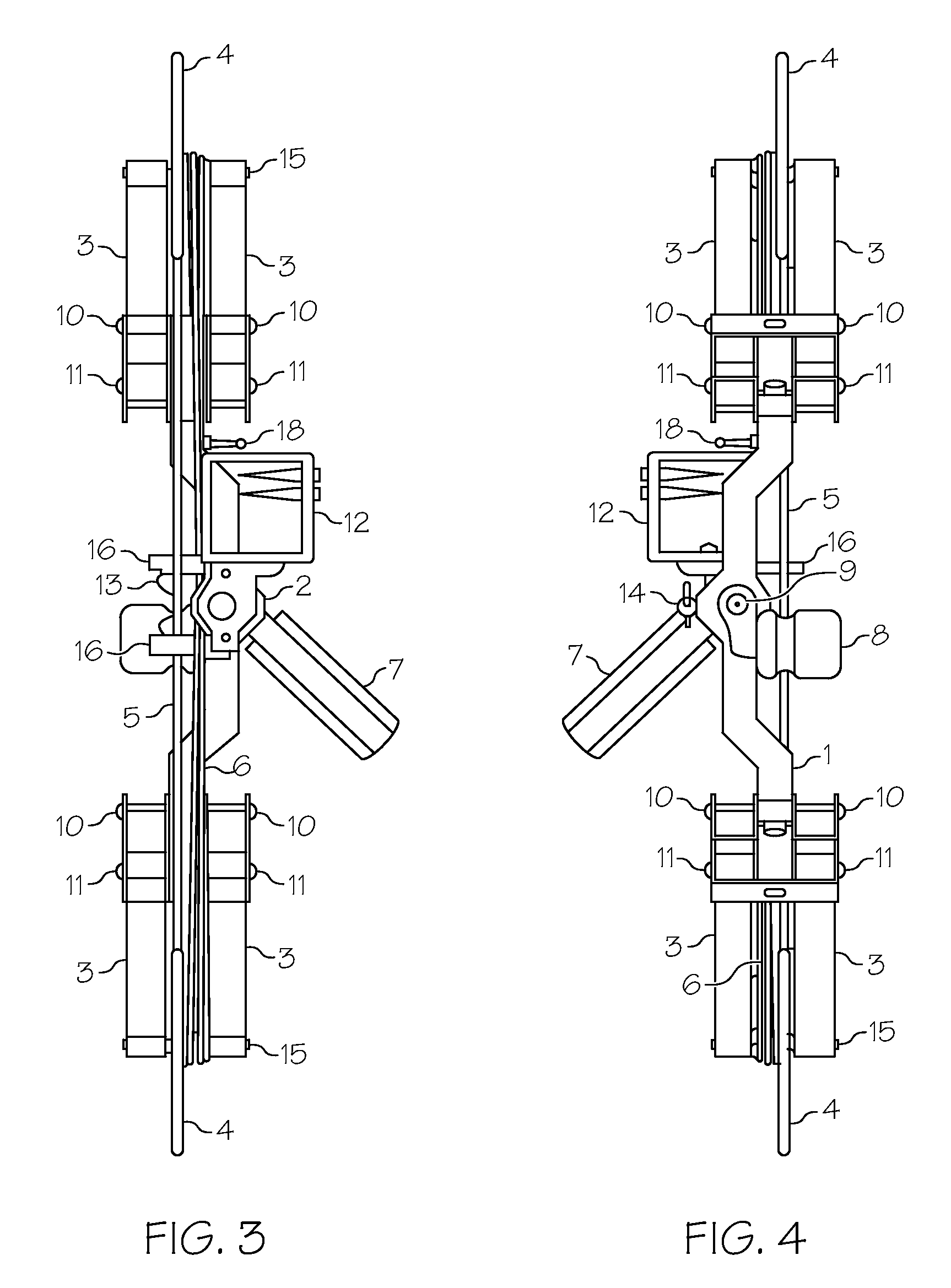Reverse energy bow
a bow and energy technology, applied in the field of shooting bows, can solve the problems of increasing the difficulty of accurate aiming and the attempt to shorten the compound bow
- Summary
- Abstract
- Description
- Claims
- Application Information
AI Technical Summary
Benefits of technology
Problems solved by technology
Method used
Image
Examples
Embodiment Construction
[0014]The following detailed description of the invention is merely exemplary in nature and is not intended to limit the invention or the applications and uses of the invention. Furthermore, there is no intention to be bound by any theory presented in the preceding background of the invention or the following detailed description of the invention.
[0015]Turning now to FIGS. 1 to 4, an exemplary compound shooting bow is depicted according to an embodiment of the invention. While describing the bow 100, the term “forward” refers to the direction along the bow headed away from an archer operating the bow 100, and the term “rearward” refers to the direction along the bow headed toward the archer operating the bow 100. The bow 100 includes a main riser frame 1 that supports an elongate tube 2, and four limbs 3 that extend forwardly from the main riser frame 1. Each of the limbs 3 is attached approximate their rearward ends to the main riser frame 1 using a limb rocker retainer 11 and a li...
PUM
 Login to View More
Login to View More Abstract
Description
Claims
Application Information
 Login to View More
Login to View More - R&D
- Intellectual Property
- Life Sciences
- Materials
- Tech Scout
- Unparalleled Data Quality
- Higher Quality Content
- 60% Fewer Hallucinations
Browse by: Latest US Patents, China's latest patents, Technical Efficacy Thesaurus, Application Domain, Technology Topic, Popular Technical Reports.
© 2025 PatSnap. All rights reserved.Legal|Privacy policy|Modern Slavery Act Transparency Statement|Sitemap|About US| Contact US: help@patsnap.com



